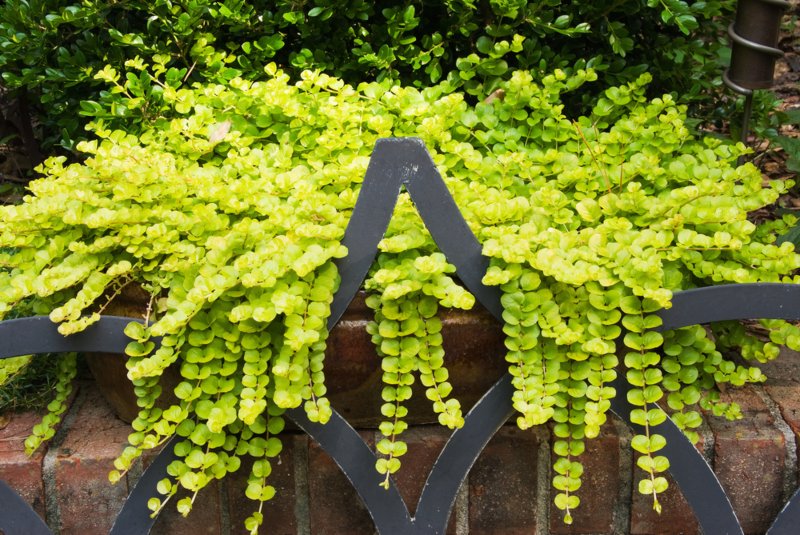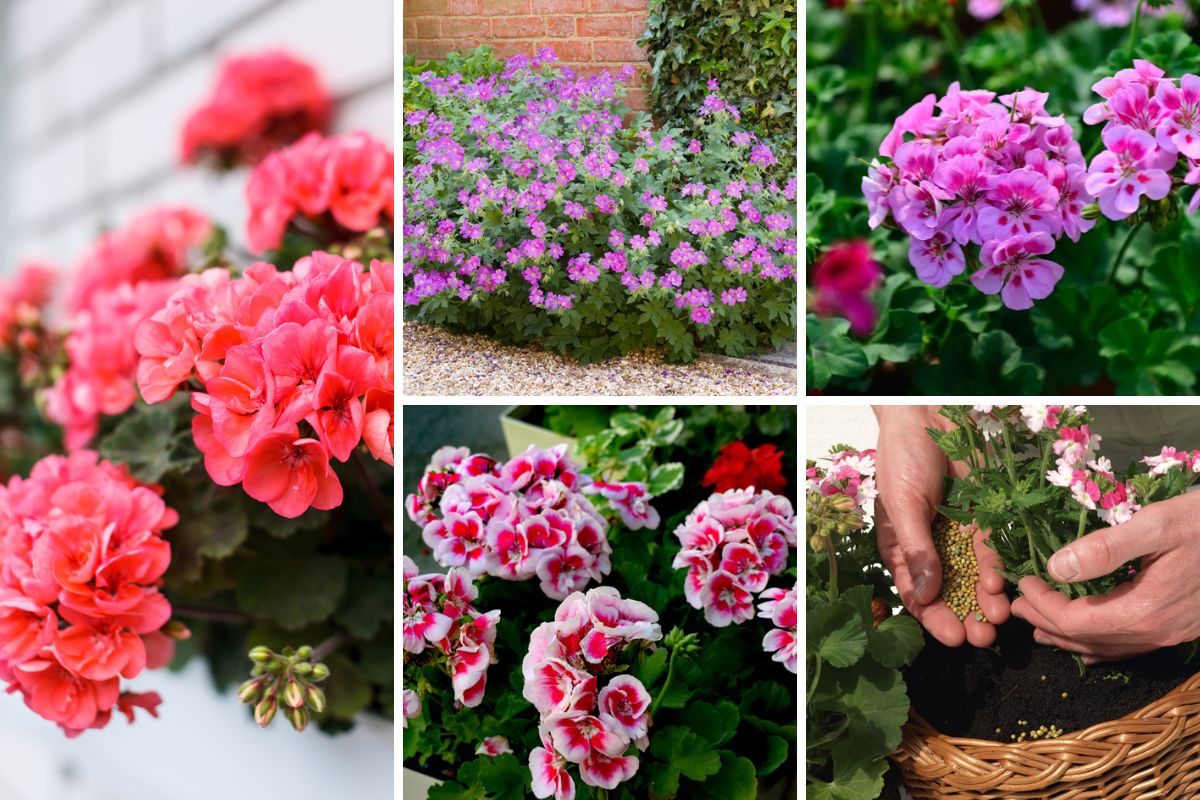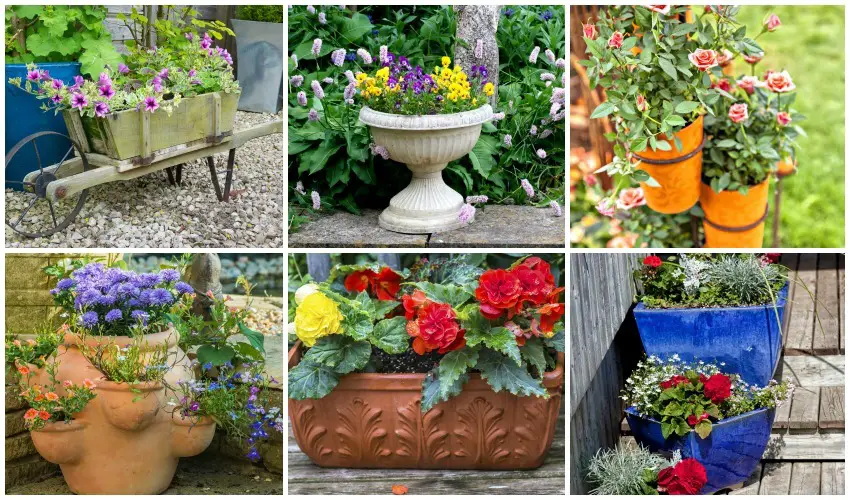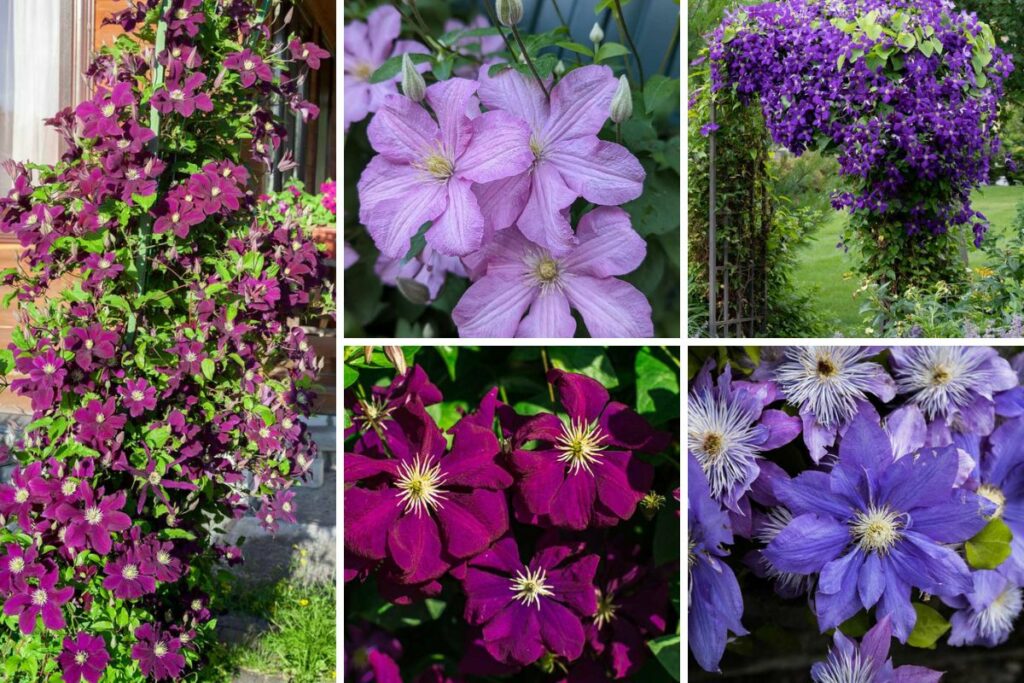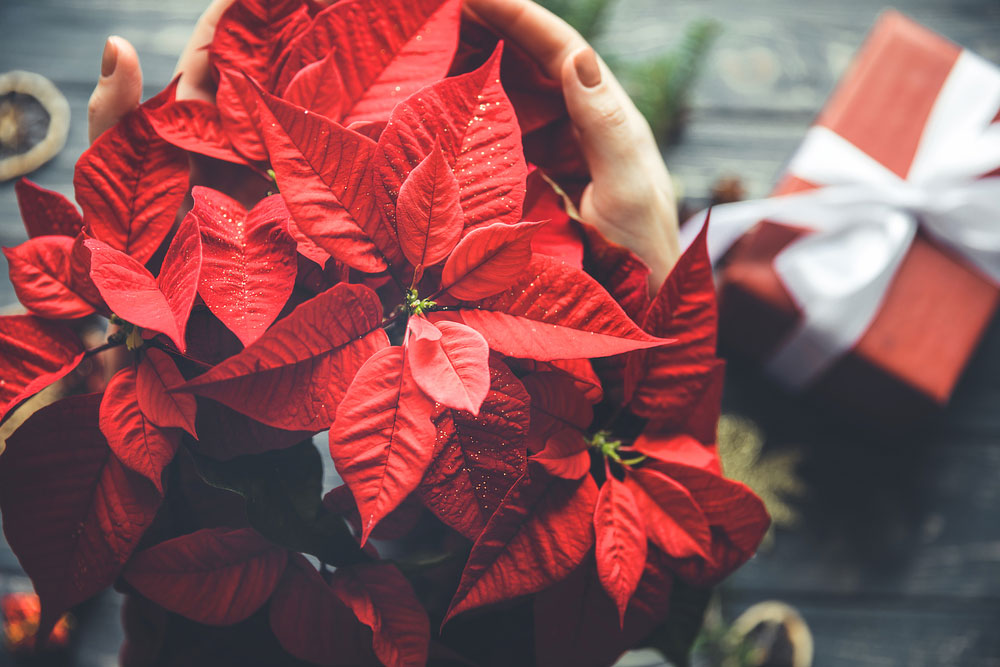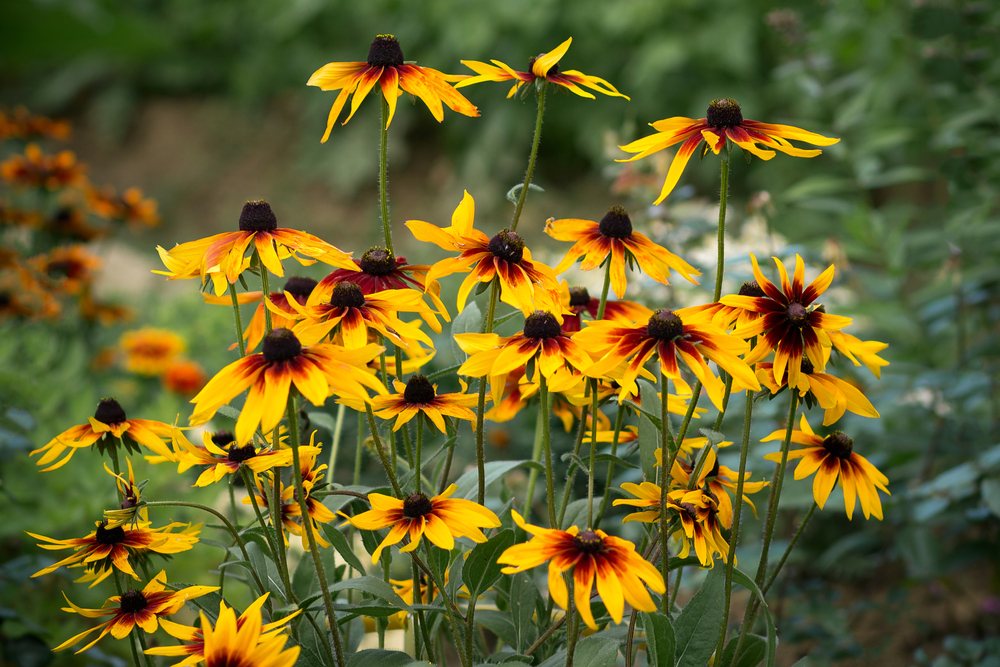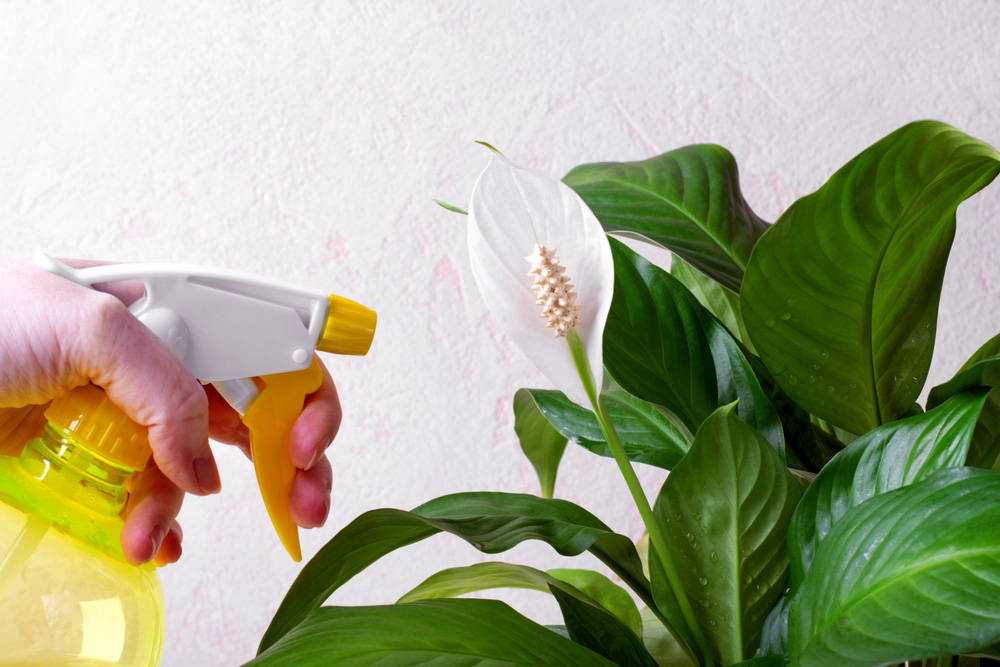
Growing a Peace Lily (Spathiphyllum) rewards me with lush foliage and graceful white blooms, but getting those flowers to appear can sometimes be a challenge.
They’re known for their easy care and are often recommended for those with less than a green thumb.
However, coaxing blooms requires understanding the specific needs of the plant. In my experience, the key is balancing the right amount of light, water, and nutrition.
I’ve learned that Peace Lilies flourish with just the right touch of attention. Regular feeding, proper lighting, and maintaining a consistent watering schedule have made all the difference in encouraging my Peace Lily to bloom.
It’s also essential to consider the warmth of their environment and the potting mix they’re rooted in. With a few strategic adjustments, it’s possible to transform a shy Peace Lily into a stunning, blooming spectacle.
Over time, I’ve gathered a set of tips that have helped me, and I’m eager to share them. So if you’re hoping to see your Peace Lily flower, follow along as I share my top ten tips that could incite your plant to produce those coveted, beautiful white blooms.
Whether you’re a seasoned gardener or just starting, these guidelines will help enhance your Peace Lily’s potential to bloom.
Understanding Peace Lily Basics
Before diving into the tips for inducing Peace Lily blooms, let me lay out the groundwork about this plant’s essentials.
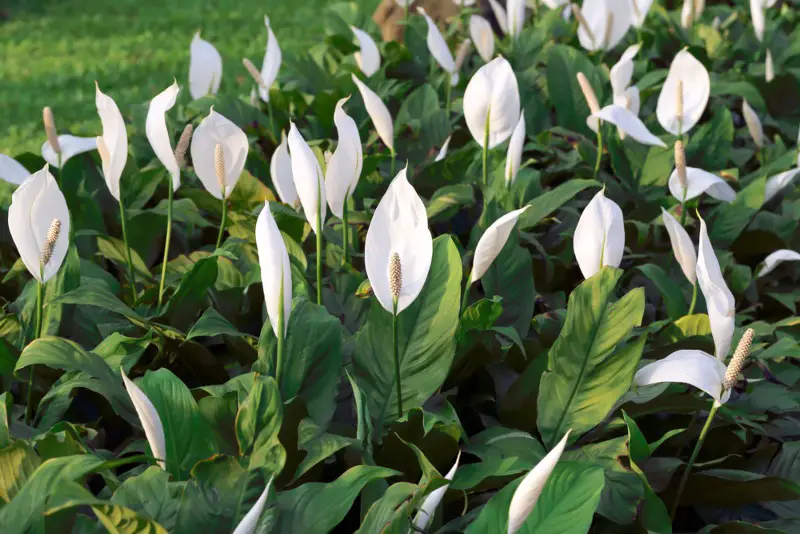
Ideal Growing Conditions
Light: Peace Lilies prefer bright, indirect sunlight. I ensure mine are placed in a spot where direct sun rays don’t strike the leaves, as this can cause them to turn yellow or brown.
Soil: A rich, well-draining potting mix is crucial for their health. I use a mix that’s one part perlite to three parts soil, which provides the necessary aeration.
Water: Keeping the soil consistently moist without overwatering is the goal. I water my Peace Lily when the top inch of the soil feels dry to the touch.
Temperature and Humidity: They thrive in warmer environments between 65-85°F (18-30°C). I find they also appreciate a high humidity level, which can be achieved with a humidifier or pebble tray.
The Lifecycle of a Peace Lily
Development Stages: It starts as a seedling and grows into a mature plant with a strong root system before it begins to bloom.
Bloom Cycle: Peace Lilies typically flower in the spring. They can bloom multiple times a year if conditions are ideal. After the bloom, the flower will fade and give way to new growth. My observations tell me that a healthy plant may bloom for several weeks.
Dormancy: Peace Lilies have a rest period (usually in winter), during which growth slows down. It’s during this time I reduce watering slightly and stop fertilizing until signs of new growth in spring.
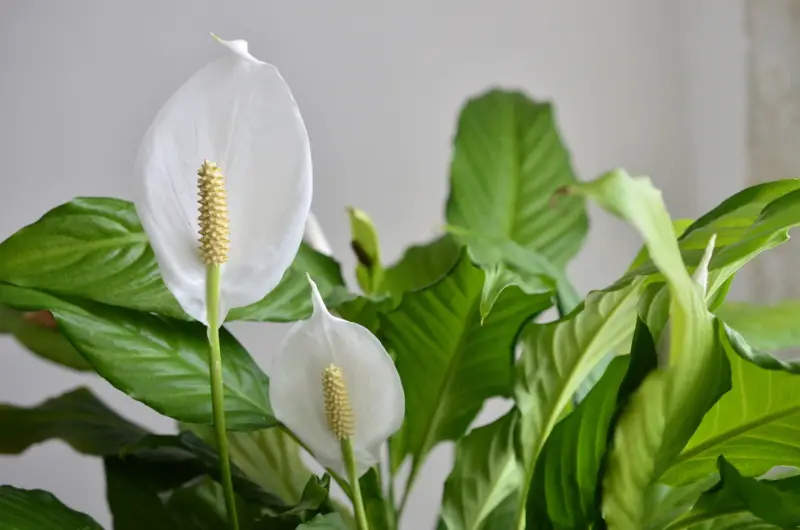
Practical Care Tips
I’ve found that consistent care is the secret to fostering lush blooms in peace lilies. Here, I share my practical care tips, broken down into critical areas that directly influence flowering.
Watering Practices for Optimal Blooming
Frequency: I water my peace lily when the top inch of soil feels dry. Peace lilies enjoy moist soil, but I avoid overwatering to prevent root rot.
Method: I use lukewarm water to avoid shocking the plant’s roots, gently watering until it begins to drain from the bottom.
Fertilizing for Healthy Growth
Schedule: During growing seasons (spring and summer), I fertilize my peace lily every 6 weeks with a balanced 20-20-20 fertilizer.
Amount: Half the recommended strength on the fertilizer package is sufficient to nourish my plant without causing a buildup of mineral salts.
Pruning and Deadheading
Regular Pruning: I regularly remove yellow or brown leaves at their base to encourage my peace lily’s energy to focus on blooming.
Deadheading: I carefully snip off spent flowers right below the flower base to promote further blooming and maintain a tidy appearance.
Troubleshooting Common Issues
In my experience with Peace Lilies, common issues often revolve around pests, leaf discoloration, and root rot. Let’s tackle these problems one by one.
Dealing with Pests
- Aphids and Mealybugs: These can be surprisingly persistent. I deal with them using a neem oil spray. Apply it once a week until they’re gone.
- Spider Mites: These tiny pests cause fine webs on leaves. I raise humidity and wipe down leaves with soapy water as a countermeasure.
To ensure success, isolate the infected plant to prevent spreading and check your other houseplants regularly.
Addressing Yellowing Leaves
- Nutrient Deficiency: A lack of essential nutrients often leads to yellow leaves. I use a balanced, water-soluble fertilizer every 4-6 weeks during the growing season.
- Overwatering: If I notice soft, yellow leaves, it could be overwatering. I ensure the top inch of soil is dry before watering again.
Remember, proper lighting is key; too much direct sunlight may also cause yellowing.
Preventing Root Rot
- Well-Draining Soil: My Peace Lilies thrive in a mix of peat, perlite, and vermiculite. This ensures adequate drainage to prevent waterlogged soil.
- Pot Selection: I always use pots with drainage holes. A lined and removable saucer helps catch excess water without letting the roots sit in it.
A regular check of the root system every few months for brown or mushy roots can help catch root rot early.
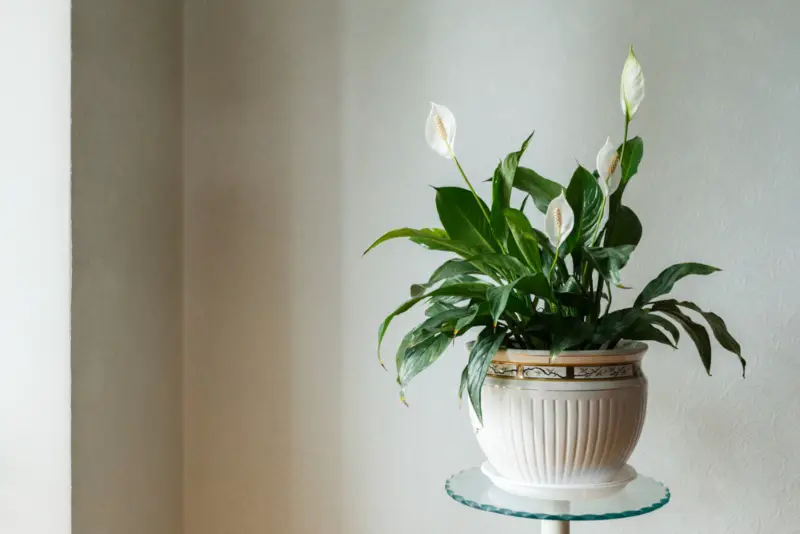
Frequently Asked Questions
In this section, I’ll cover some of the most common inquiries about nurturing peace lily blooms. Whether it’s about fertilization or bloom care during the cooler months, I’ve got you covered.
How do I encourage my peace lily to produce more blooms?
To encourage more blooms, I make sure my peace lily gets bright, indirect light and maintain high humidity. Also, I keep the soil consistently moist and provide it with a balanced, water-soluble fertilizer every 6-8 weeks during the growing season.
What type of fertilizer should I use to promote flowering in my peace lily?
I use a balanced, liquid fertilizer with an equal ratio of nitrogen, phosphorus, and potassium (such as 20-20-20), diluted to half-strength. This helps promote both foliage and flower growth in my peace lily.
Why does my peace lily have green flowers, and how can I get them to be white?
The green color of the flowers might be due to youth; they typically start green and turn white as they mature. To help them along, I ensure adequate light and avoid excess fertilizer, particularly nitrogen, which can favor leaf growth over blooms.
What care strategies should I follow during winter to ensure my peace lily flowers?
During winter, I reduce watering but ensure the air around my peace lily isn’t too dry. I keep it away from cold drafts, provide plenty of indirect light, and hold off on fertilizing until the spring arrives.
What are the indications of a peace lily starting to bloom?
When my peace lily is about to bloom, I look for small buds emerging from the base of the plant. These buds will gradually grow and develop a white, hood-like spathe, signaling that a bloom is on its way.
My peace lily hasn’t flowered at all; what could be the reason?
If my peace lily hasn’t flowered, it could be due to insufficient light, over- or underwatering, or lack of nutrients. I check to make sure it’s in bright, indirect light, adjust my watering schedule, and provide a balanced fertilizer during the growing period.

